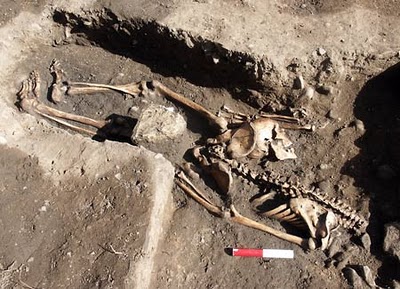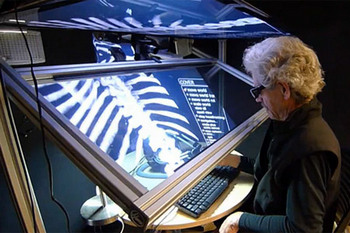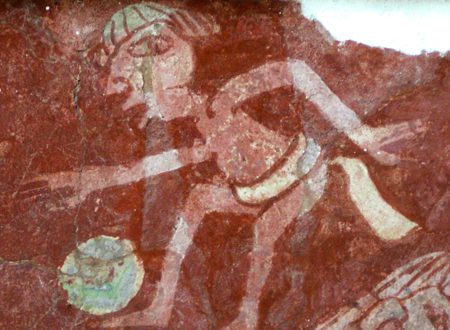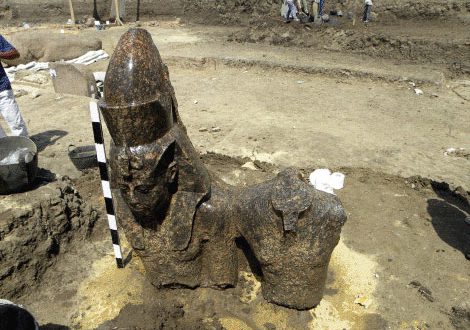 After more than ten years of excavation and restoration, the ancient well-house at the Royal Palace of Qatna, Syria, has been officially opened to the public. It is the first phase of an ambitious project that will see the entire palace site opened for international tourism.
After more than ten years of excavation and restoration, the ancient well-house at the Royal Palace of Qatna, Syria, has been officially opened to the public. It is the first phase of an ambitious project that will see the entire palace site opened for international tourism.
The ancient city of Qatna is located at Mishrifeh in western Syria, about 18 km north-east of the city of Homs and 200km from the modern-day Syrian capital Damascus. Bronze Age Qatna was strategically located at a the now vanished lake of Mishrifeh. In the 2nd millennium BC, itbecame the capital city of the Syrian kingdom, controlling the trade routes between Mesopotamia and the Mediterranean, and between Anatolia and Egypt.
Around 1650BC, Qatna’s Royal Palace was built. The palace, which served as living quarters and for administrative as well as religious purposes, is believed to have been constructed in less than fifty years. When completed, the monumental complex was more than 150 metres long and 100 metres wide. When the Hittites conquered Syria in 1340 BC, the palace was destroyed.
Qatna Archaeological Park, AD 2013
More than 3000 years later, archaeologists are ready to show the first results of large-scale restoration project that will create the ‘Qatna Archaeological Park’.
As part of the project, the ruins of the palace’s well-house and the surrounding area were covered by a 20 metres by 28 metres transparent construction. With its unusual deep well and 80-step basalt stairs, the unique well-house is a precious monument of Near Eastern Bronze Age architecture.
The renovation project a collaboration between the universities of Tubingen and Udine (their excellent project website), and Damscus is set to be completed in 2013.
Our generation has a moral responsibility to preserve the archaeological heritage for future generations, said Daniele Morandi Bonacossi from the University of Udine.
Especiallyfor countries rich in cultural heritage and with a booming economy, such as Syria, it is extremely important to establish a strong link between cultural heritage, archaeological resources and sustainable management of tourism in order to ensure the country’s growth, continued the co-director of the archaeological mission at Mishrife.
Archaeological Treasures from Qatna’s Tombs
Parallel with the restoration works, archaeological excavations were carried out at ancient Qatna this summer,focussing on further exposing the second tomb discoveredbeneath the Royal Palace in 2009.
Late summer, some remarkable finds were recovered from the intact not looted burials. Amongst theitems found in the grave chamber were an Egyptian cup of black translucent obsidian, gold bracelets, and neck rings decorates with gemstones including Baltic amber.
More than 100 skeletons were discovered at the cryptso far. Most of the skeletal remains, which likely belong to members from Qatna’s royal family or household, were grouped in wooden boxes. These ‘mass coffins’ were positioned one next to another, and sometimes even stacked.
One of the boxes contained the pelvic bone of a child, encircled by a wide bronze belt. Another held a smaller box, inlaid with ivory. The inlaid tiles decorated the wooden box on three sides and, fastened with bitumen, were still partly in their original positions.They show animal figures such as gazelles, monkeys and lions, a hybrid creature with a lion’s head and aneagle body, as well as humans. The box isa unique exampleofSyrian-Mesopotamian art of the late Middle Bronze Age.
A seal with an inscription of the Egyptian queen mother Ahmes-Nefertari (c. 1560 BC) was added to the artefacts allowing the dating of the tomb, of which the contents are an impressive testament to the close contacts between the Syrian Kingdom of Qatna and Egypt in the middle of the 2nd Millennium BC the Hyksos period and the beginning of the New Kingdom.
Promising Future Excavations
At the official opening ceremony for the well-house, a new excavation license was signed so we may look forward to more fascinating discoveries at Qatna being made in the next five years.
The renewal of the license allows for the excavations at the lower town and the satellite building east to the Royal Palace to continue, but also gives the dig teams access to a large new area at Qatna’s western gate which so far is unexplored and molto promettente.





